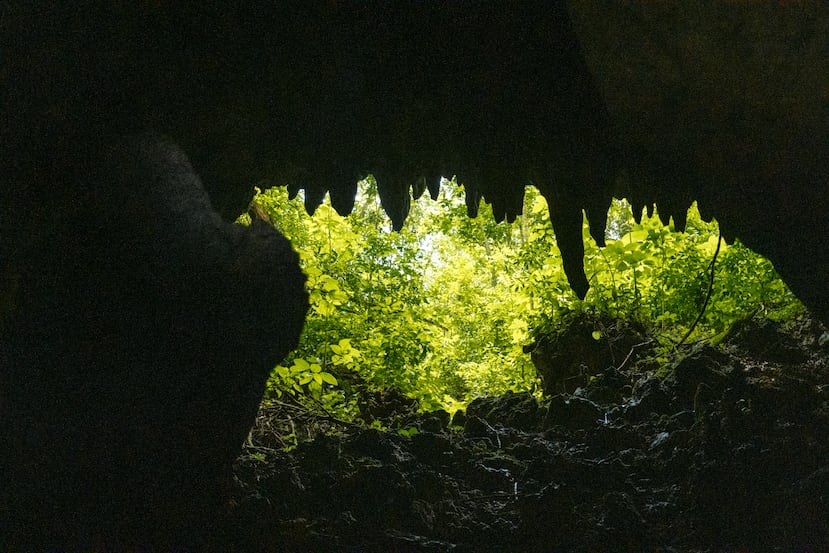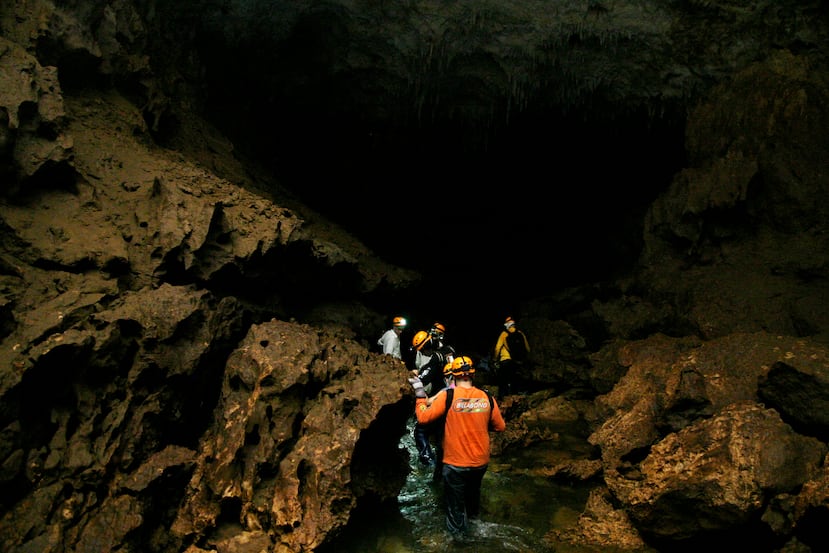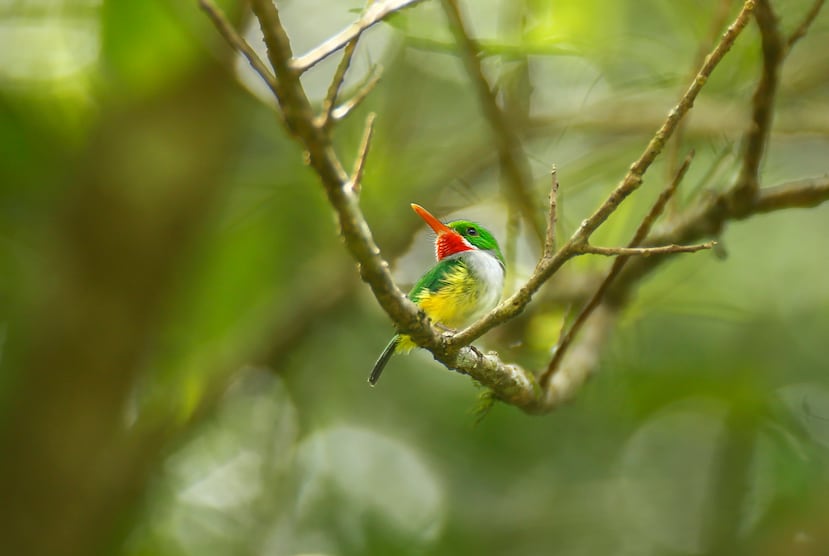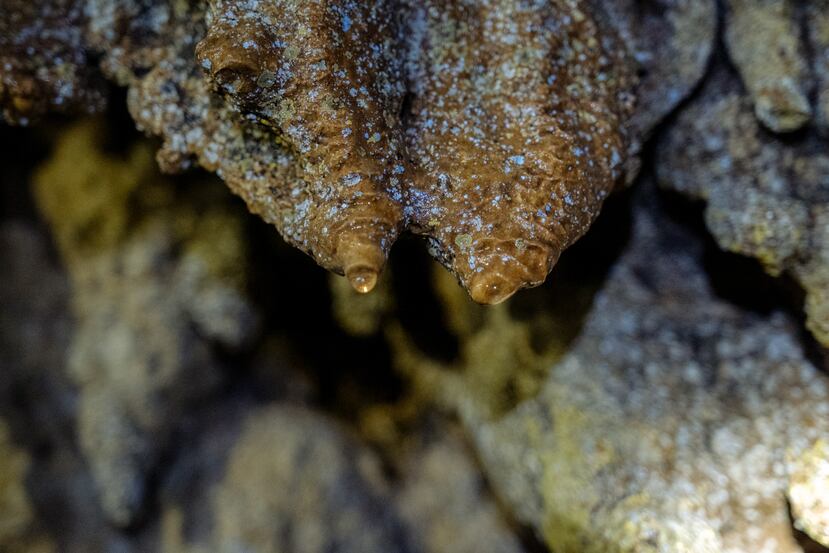Over the last 2.5 million years, nature has painstakingly sculpted the surface of the north coast of the main island of the Puerto Rican archipelago, creating an almost magical conglomerate of caves, hummocks, aquifers and underground rivers throughout the region known as the karst of Puerto Rico.
---
Lee este artículo en español.
---
This karst - an important natural system - covers practically all the northern municipalities, from Loíza to Aguadilla, and is composed of multiple limestone formations that began to be deposited 23 million years ago, during a time when the entire area was submerged under the ocean and where a rich marine life abounded.
It is the peculiar qualities of limestone rock that allow it to react chemically on contact with water, allowing the liquid to seep through its porous surface and slowly dissolve. As a result, surface rivers are scarce in this area and instead unerground water flows abound, which in turn create these impressive cave systems throughout the karst zone.
However, the richness of the area is not only geological, since, in addition to the 14 important caves identified in this complex natural system and the underground streams, there are some 550 different species of flora and fauna, including most of the endemic birds of Puerto Rico and all the species of bats of the archipelago. Likewise, fossil evidence of ancient species and human activity -pre-Columbian and modern times- can be found.
As part of the underground water flows created by the interaction of water with limestone rock, a unique river is hidden, which extends unnoticed through the bowels of the island and represents one of the largest underground bodies of water in the world, which runs 10.5 miles long. The Enchanted River of the Enchanted River Protected Area, between the municipalities of Florida and Ciales, is definitely one of Puerto Rico’s natural heritages.
“The area is extremely broad and includes 14 smaller areas, that is, it is like a mosaic of protected areas in the northern karst area of Puerto Rico that are accessed through PR-140 and PR-149, from Florida to Ciales,” said Ricardo Rodríguez, regional management coordinator for Para La Naturaleza, the organization that guards the area, to El Nuevo Día.
“Enchanted River is a subway river, the second longest man-made river in the world. It is one of Puerto Rico’s most impressive geological treasures and our organization, Para La Naturaleza, currently protects three of the entrances to the river system,” he added while explaining that it is known as an “enchanted” place because of the sounds that the changes in temperature pressure produce inside the cave, which gives it a “haunted” sensation.
Rodríguez also explained that the Enchanted River is part of the hydrological basin of the Manatí River.
“A hydrological basin is where the waters come together and that comes from (the municipality of) Barranquitas to the mouth of the Manatí River, and precisely at the mouth is the headwaters of the northern region, which is the Hacienda La Esperanza Protected Natural Reserve,” he said.
A magical body of water
In this case, José Nevares, Para La Naturaleza’s interpretation coordinator, explained that the organization offers tours guided by environmental interpreters in which visitors can go deep into the bowels of the karst and walk along the river, while receiving valuable information from the experts.
“We environmental interpreters are experts each in our own area. We have geologists, biologists, agronomists, historians, tourism experts, so each of us went through a very rigorous training process to become certified as environmental interpreters,” said Nevares, explaining that the difference between an environmental interpreter and a tour guide is that the former seeks to connect the person with the resource.
According to his account, upon arriving in the remote area, the tour begins in the Enchanted Forest of Florida, as it is known by the locals. There is located one of the entrances to the river known as the Enchanted Cave. Through this, visitors can immerse themselves in the landscape of this hypnotic underground world from where crystalline waters emanate from the interior of the earth.
After entering, the descent begins through the irregular rock formations. Looking back, the mouth of the cave resembles the jaws of the earth, just after engulfing the visitor and taking him into a scenario almost taken from the adventures of Alice in Wonderland, only in real life.

“Within the areas we manage we have several of the entrances to the system. There are approximately six entrances to the system and we manage three of them, Escalera Cave, Yuyú Cave and Encantada Cave, and in the last two we do tours for the public, which last approximately five to six hours, where we hike a little more than two kilometers,” explained the interpretation coordinator, while pointing out that all the necessary equipment is provided to the visitor.
“Once we proceed to enter, there are always three interpreters at these events: one in front, one in the middle and one at the back of the group, which usually consists of 12 people,” he added.
Inside, the impressive stalactites and stalagmites descend and stand imposing like a millenary limestone cathedral before the visitor’s astonished gaze. As the tour continues, the remote rumbling of the subterranean waters becomes more and more noticeable until, suddenly, the visitor can begin to see how the torrent takes over the subsoil.

“Then we move through the trail and, punctually, we will make between three to five interpretive stops to develop the theme to be worked on during the tour. Whether it is to see a geological formation or to talk about the biodiversity of the caves,” explained Nevares, while assuring that during the tour fossils of species that no longer inhabit the island can also be found.
“During the tour we can find fossils that allow us to identify species that inhabited that cave thousands of years ago. Like the dugong, which is a cousin-brother of the manatee, but which no longer exist in Puerto Rico, they are only seen today in the Indian Ocean. Other fossils found are of the mammal known as the sloth and even prehistoric bats that no longer exist,” he added.
And it is this peculiar geological beauty that has allowed the survival of the area as an area barely interrupted by human activity, while its use has historically been limited to fishing, subsistence agriculture, the location of stills and the extraction of guano. Unfortunately, and despite this reality, Puerto Rico’s karst is currently one of the 10 most threatened karst ecosystems on the planet.
Several species of endangered flora can be found in this area such as the manaca palm, the rosewood, the small guabairo and the matabuey. In addition, there is an extensive record of fossils, as well as a significant amount of pre-Columbian and more modern archeological sites.

Nevares explained that, although it is a protected area, it is open to the general public. However, he urged those interested in visiting the area not to do so on their own, because the tour is dangerous and requires an interpretive guide.
“We have tours as part of the voluntary activities in that protected area, but there are also people who can access those spaces, it is allowed. Anyone can use them, but of course, always taking into account that they are protected areas,” said the expert.
More protection is needed
Rodríguez explained that, despite being designated as a protected area, in reality there are no legal statutes that protect this zone in the same way that other zones, such as Hacienda La Esperanza, are protected by legal mechanisms.
“They are known as protected areas and these are spaces that our organization manages and protects in perpetuity, but we are not designated by any state or federal legal statute,” explained Para La Naturaleza’s regional management coordinator.
“In the case of the areas located on the Enchanted River, in all that is known as the northern karst, there is special management and planning legislation that limits the uses and development in this place in order to protect the resource and the limestone rock,” he added.
However, Rodríguez did not downplay the need to provide greater protections to this area, which is susceptible to overdevelopment and exploitation of land without methods to mitigate the damage caused.

“The fact that they do not necessarily have a legal designation at the state or federal level as a natural reserve does not mean that they are not spaces that can be protected. And that is what we do, as well as many other entities that privately manage and conserve the area,” said the regional management coordinator.
Rodríguez explained that part of Para La Naturaleza’s responsibilities as custodians of the Enchanted River Protected Area is to create a management plan for the area with the purpose of developing the best practices for the conservation of the resource following the guidelines of the International Union for Conservation of Nature (IUCN), an international organization that works in the field of nature conservation and sustainable use of natural resources.
“These management plans are reviewed every five years and reinterpreted every 10 years to keep them up to date and add new objectives, if necessary,” he said.
Although there are local laws that protect these types of areas, such as Law 67 of 2017, which makes it a crime to park SUVs in areas of a body of water, Nevares, for his part, assured that legislation is still needed to offer greater protection to an area plagued by unbridled development.
“There are many problems of garbage, of people who park SUVs in the rivers, who throw debris because there is still this perception that the river disappears, and there is always the problem of unplanned developments that negatively impact the resource,” said the interpretation coordinator.
---
This content was translated from Spanish to English using artificial intelligence and was reviewed by an editor before being published.



